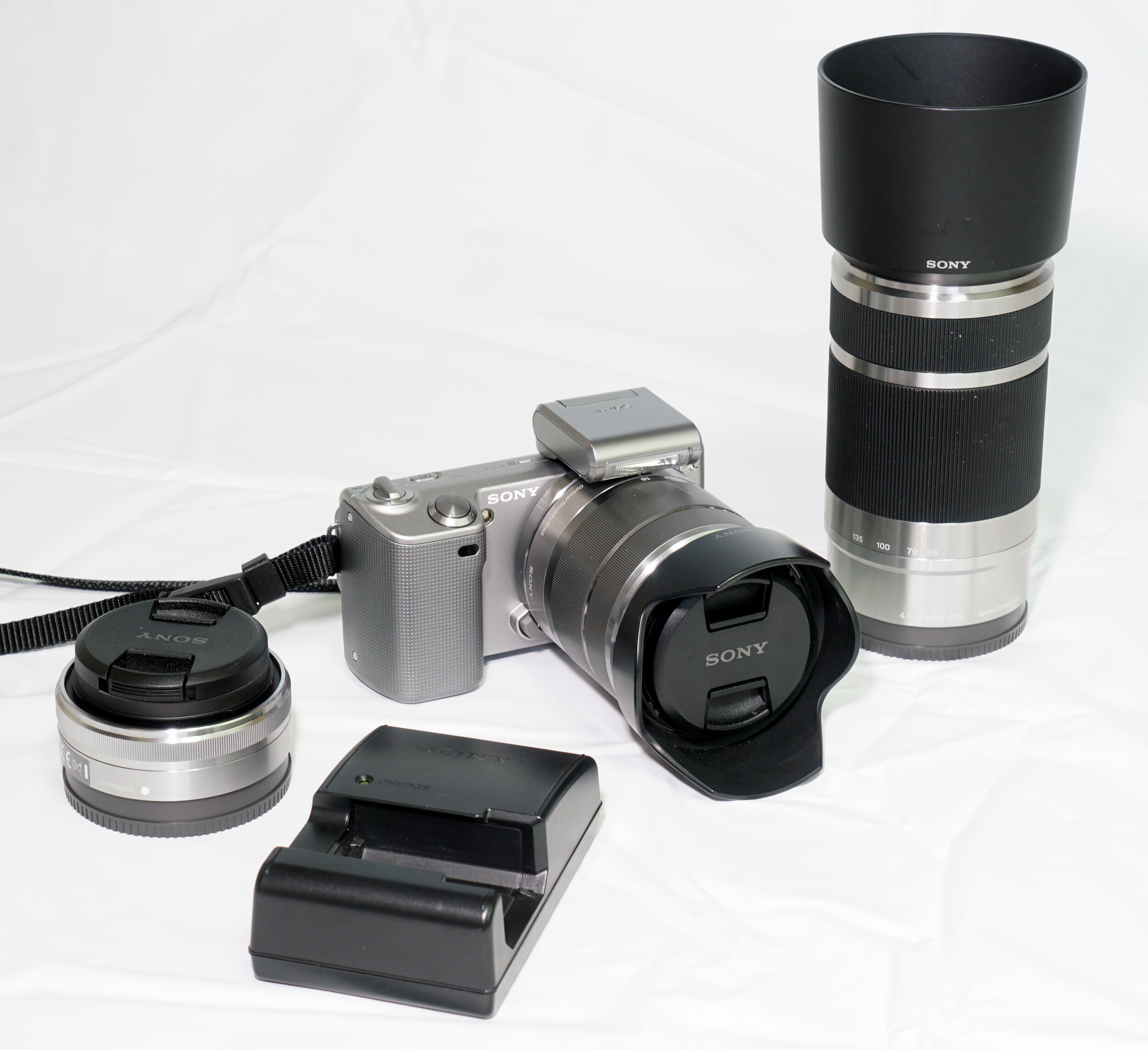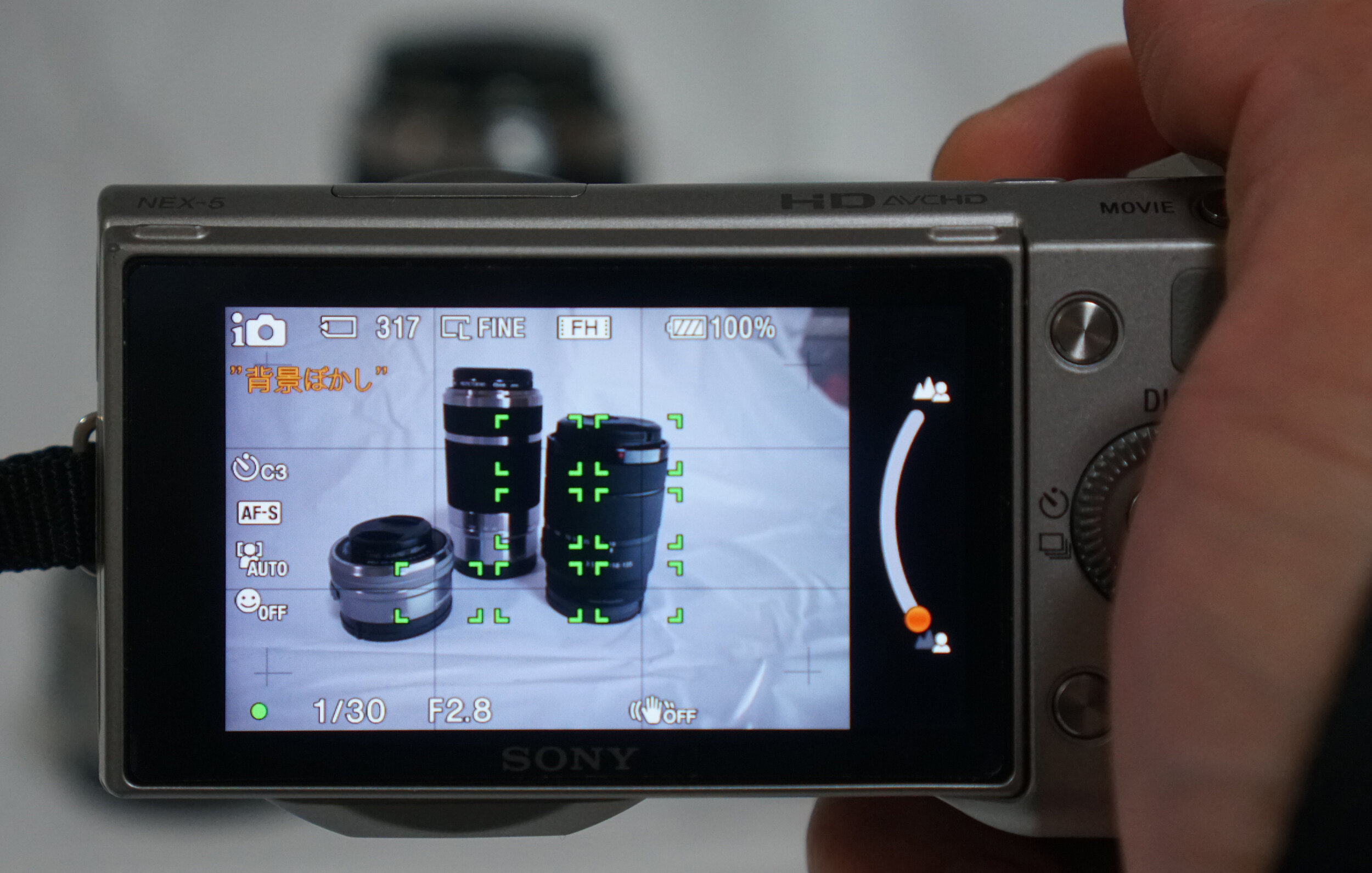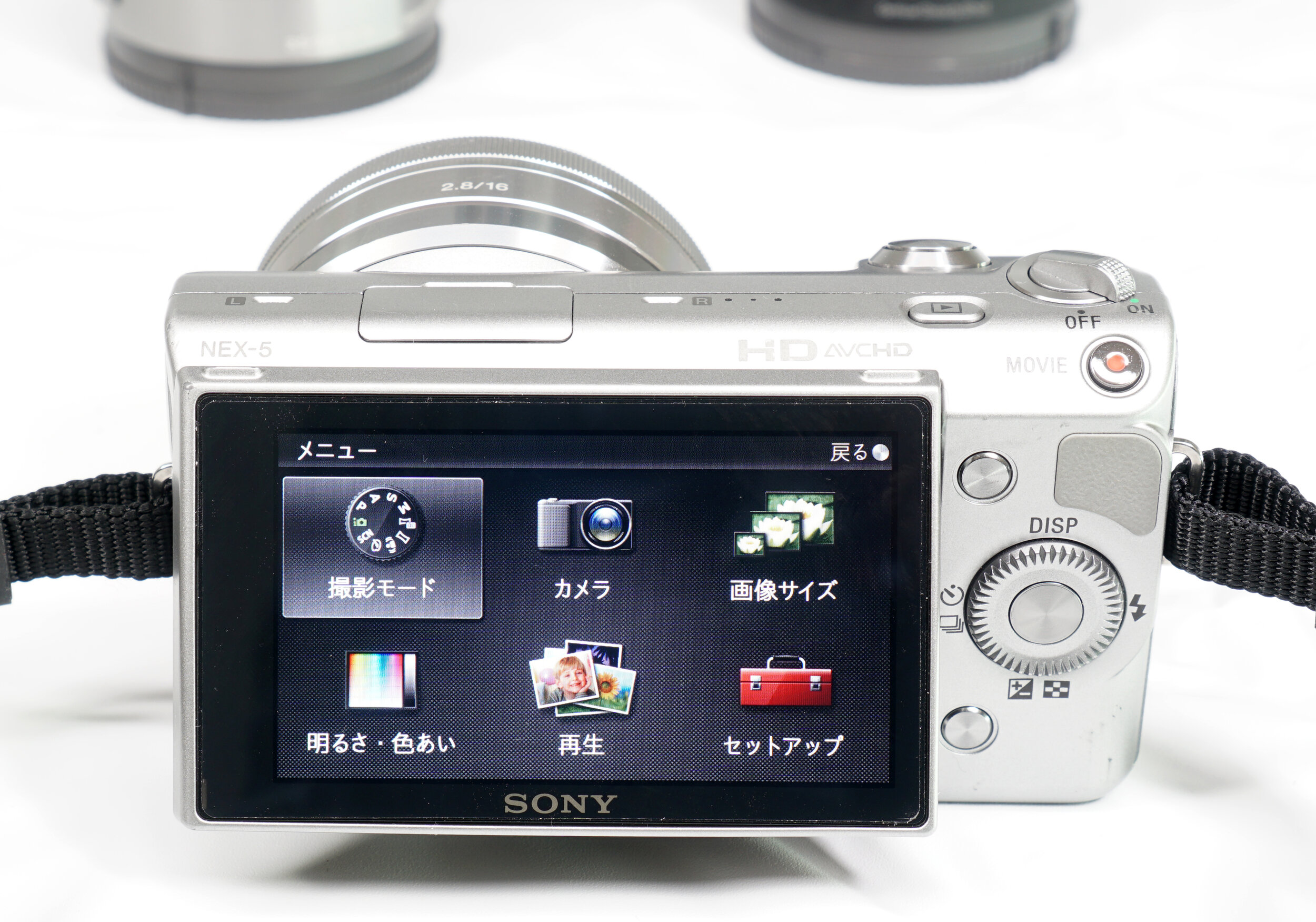[ Photography ] Sony NEX-5 Mirrorless Review
I have been enjoying my Sony A6000 and A6300 for a year now, at least one of which is always going everywhere with me. I even squeezed more shots out of my old Nikon D40x, but after a few thousand more photos, the shutter issue appeared again. I suppose the old beast has done more than I could ever have expected, so it was about time I retired it.
However, the D40x had a lens that I really needed, a 70-300mm zoom that really could bring subjects up close without me getting in the way. This was particularly useful for sports competitions, where it was not possible or practical for me to get really close with my current 18-135 zoom on my Sony bodies. Now that I’ve fully committed to the E-mount, I searched for a replacement and came across a “kit lens” 55-210 and a full-frame 70-300. The 70-300 was exorbitantly priced at over $1200 so that was immediately out of the question. The retail for the 55-210 was about 42,000¥ ($390 USD), but since it was also commonly included as part of the “Double-Zoom Kit” included with various Sony cameras, I could find it in the second hand market for around 12,000¥ ($110 USD).
This lead me to pick up a second-hand NEX-5 camera, 16mm F2.8 prime lens, 16-55 F3.5-5.6 lens, 55-210 F4.5-6.3 lens, and various accessories off of Yahoo! Auctions for barely more than 25,000¥ ($230 USD) shipped. This was a bit more than I wanted to spend on just the lens, but I figured the extra body could come in handy. I actually am still using a crappy Canon point-and-shoot ELPH150 at my workplace, so the NEX-5 will stay there permanently for whenever a quick photography session is required. Look forward to a review on the other lenses, but the question right now is “How good is a camera released back in 2010?”
Review
To put it simply, the Sony NEX-5 is a 9-year-old, entry-level mirrorless camera that cannot complete with current Alpha-series cameras. In fact, the last NEX camera, the NEX-7 (2011), was dropped in favor of establishing their entry-level camera as the A6000, released in 2014. This move pushes the Sony mirrorless line out from amateurs and beginners because even the basic A6000 is a full-featured camera that is not really suited for newbies.
That being said, the APS-C sensor is nothing to scoff at, especially since it can take 14MP RAW photos. The interchangeability of the E-mount with a wide selection of Sony and third-party lenses give it a real flexibility that traditional point-and-shoots do not have.
Design
Let’s start with the design of the camera which looks quite premium, but is actually a fairly light, plastic body. The small front grip does not make it pleasant to hold for long periods of time if the camera is coupled with anything larger than the 16mm kit lens, as it will be very front-heavy. With the exception of the power switch, the controls are fairly easy to reach and the tilting screen is decently bright and visible in all but direct sunlight; a problem my A6000 and A6300 also have. It’s too bad the screen also doesn’t flip forward like the A5000/5100 which would increase its usefulness to amateur photographers and perhaps vloggers.
For the serious photographer, they will find the complete lack of a rear viewfinder, a touchscreen, and a hot shoe seriously disappointing. (There is also a tiny add-on flash, but I’ve not tested this.) Further, they would want a physical function wheel, a wider array of customizable buttons, and wireless connectivity.
Along with other NEX and Alpha (A7, A5x00, A6x00, etc.) series cameras, the NEX-5 shares the same versatile NP-FW50 batteries in varying mAh. While the genuine batteries are only rated at 1020mAh, they seem to last for quite awhile and aftermarket third-party batteries are also plentiful and cheap.
Function / Performance
The first thing I noted about this camera was the extremely loud mechanical shutter. It was so loud that I initially thought I had purchased a second-hand dud. I had to double-check online and it turns out it’s normal… My Sony A6000 and A6300, while not exactly quiet themselves, are absolutely a whisper compared to this. Let’s just say in a quiet auditorium, this camera will certainly draw attention for all the wrong reasons.
Intelligent Auto Mode
I suspect Sony intends most of its NEX users to take photos under the Intelligent Auto Mode and to be fair, Sony’s algorithms are pretty effective, adjusting ISO, shutter speed, aperture, and white balance quite well. Over the few hundred photos I’ve taken thus far with this unit, it seems to find good settings nearly every time, though my only problem is that I cannot change focus area in this mode. (It often misses the target I want to focus on, which is typically the center object.)
The lowest bottom of the rear buttons is also dedicated to a highly annoying Advice menu which shows several dozen pages of simple photography lessons. This button cannot be changed in iAUTO, leading me to question how often will the typical user actually refer to this? Not to mention all of the advice is very standard, basic stuff any halfway decent shooter will already know intuitively, though I suppose it may not be common sense for all.
The one interesting “cheat” in iAUTO is the adjustable boke background blur. This feature simply forces the camera to prioritize aperture, but, as expected, it only can go as wide as your lens can handle. This isn’t a software cheat like some smart phones do to get fake boke… which leads me to also question how many users will adjust this slider.
Menu
Buried in the simple menu system are the virtual function wheel and various other camera settings. The most common settings are directly in the corresponding section, though some of the more advanced options are under the Settings-specific section. Once in different modes, you can also customize a few of the back buttons to give you some quick-access settings. Let me emphasize that it is a few buttons and some settings… definitely not enough for the power-user.
The remainder of the menu is pretty Sony-esque, as it is somewhat unintuitive, but otherwise there are plenty of adjustments, filters, and controls. If it only had a dial wheel and two or so more buttons, I think it would really make this better oriented toward the enthusiast.
Seriously, all this sounds like I would hate the camera, but its real-world performance can’t be disputed. Even its older hybrid AF system is decently quick, quite sharp (when focused on the subject I want), and has reasonably effective facial and smile recognition. Even with the provided kit lens and “only” 14 megapixels, the quality, richness, and beauty of the photographs are impressive.
NEX-5 / Sony 16mm
Sample Photos
Here are some sample shots taken with the NEX-5 and A6000 at Mt. Aoba in Takahama, Fukui. Both are set on iAUTO, shot back-to-back at the maximum focal length, and utilizing the same tripod. The NEX-5 is shot at 14MP and the A6000 at 24.3MP, taken in RAW, and uploaded as JPG with no other edits.
Sony 16mm F2.8
NEX-5
NEX-5
A6000
A6000
Sony 18-55 F3.5-5.6
NEX-5
A6000
NEX-5
A6000
As you can see, the NEX-5’s images are actually quite lovely, though the color saturation is a bit heavy-handed. It surprisingly does well to minimize chromatic aberration compared to the A6000 even though they are both taken with the same lens.
Language Settings
For any buyer interested in picking up a Sony NEX series camera from Japan, be aware that there is no way of switching the language from Japanese to English, to my knowledge. There is no menu setting to change languages and unlike my A6000 and A6300, there is also no way to upload software and unlock hidden menu settings. Thankfully, I have just enough kanji reading ability to read the simplified menu system to use the camera.
NEX-5 / Sony 16mm
Conclusion
Let’s be honest, the old NEX-5 can’t compete with the current crop of basic DSLRs, but it is undoubtedly still a great starter camera for the price and excellent for beginners who want to get into photography without dealing with a bunch of minutiae. With its interchangeable lens system, quick autofocus, and solid APS-C sensor, coupled with a better photographer (ie. not me), it can take great photos which still tops the best cell phones even now.
















